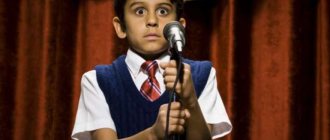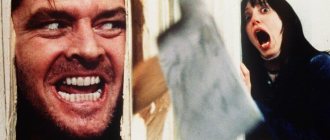.
An obsessive fear of everything in the world is called panophobia. It is recognized as one of the most complex mental illnesses. This is due to a large number of causes of phobia. Thanks to the many symptoms, it is not difficult to determine the presence of a fear of something.
Fear of everything is called panophobia
A person with such a mental disorder is really afraid of many things: traveling on public transport, contacting animals, communicating with peers, being rejected by loved ones. A person suffering from panophobia is confident and constantly expects something bad to happen to him. Prefers to stay at home alone. But there are effective methods of psychotherapy aimed at getting rid of panophobia.
Read about Russophobia
What is the person experiencing?
Every person is afraid of something, but not everyone has phobias. In psychology, a phobia is considered a pathologically increased manifestation of the fear reaction to a stimulus.
Signs of a phobia:
- panic;
- shiver;
- cardiopalmus;
- suffocation;
- feeling of heat;
- sweating;
- often - ringing in the ears.
Fear is not associated with a specific threat, but with a specific situation. The reaction of the human body may be such that it is impossible to move, and numbness sets in. Fears are 2 times more common in women than in men. Sometimes various anxiety states are also called phobias, although this is not entirely true.
It happens that children or women, wanting to be the center of attention, begin to be afraid of something, and gradually this becomes a habit. Sometimes a particular phobia causes a feeling of strong disgust, for example, to spiders or worms.
What phobias exist, and why are people scared of so many things? The reasons for this are memory, imagination and speech. It was a large number of fears and concerns that helped humanity survive and move forward. Obsessive fears vary in intensity. Despite their senselessness, coping with them is sometimes difficult. Existing phobias are systematized alphabetically, their names are in Greek and Latin.
Types of fear
The classification of phobias is not clearly defined. Psychotherapists and medical psychologists group them into groups based on certain characteristics. The main types of human phobias based on the plot of fear are as follows:
- Social - appearing in any social situations and relationships in society.
- Agoraphobia is the fear of public places.
- Specific, associated with a specific object or phenomenon.
- Associated with sexual manifestations.
According to the age at which they manifest themselves, types of fear are divided into children's, teenagers' and parents'.
In young children, there is a fear of the dark, strangers, loneliness, small animals or insects. This usually goes away with age.
Parental phobias are associated with excessive responsibility, the fear that something terrible might happen to their children. To avoid this, the child is not allowed to leave the house again and his freedom is limited.
At school age, a child may develop social fear when he refuses to go to school under any pretext. What is the fear of being humiliated by ridicule called? Catagelophobia. In addition to this, a student may be tormented by the following most well-known phobias:
- ereitophobia - fear of blushing in public, fear is accompanied by severe embarrassment and a feeling of constraint;
- hipengiophobia - fear of answering at the blackboard;
- Scoptophobia is the fear of looking funny and ridiculous in the eyes of others because of one’s words, actions or appearance.
General concepts about phasmophobia
The word " phasmophobia
" comes from the Greek word
phasmophobia
:
phasma
- "
ghost
",
phobia
- "
fear
". Therefore, phasmophobia is the fear of goblins, ghosts and other otherworldly characters.
The most problematic stage is that a person cannot explain why he is terrified of these inanimate creatures. Such people usually simply become depressed.
Phasmophobia can occur in both children and adults. For phasmophobes, panic arises in the late afternoon, because darkness is the time when evil forces come out.
Children are more susceptible to the emergence of this fear: when they are frightened, they begin to be afraid of otherworldly sounds, and then stop sleeping altogether. Adults are also very tense in the dark (even going to the toilet is very difficult for them).
During the day, phasmophobes are very afraid of the mention of poltergeists and other creatures: any word about the other world makes them hysterical. Even the slightest mention of a ghost can trigger depression in such people.
Venustraphobia is the fear of beautiful women.
Fears of adolescence
Among adolescents, the most common phobias are related to intimate life; Their peculiarity is that boys and girls live with them, suffer, but do not tell anyone about them. During the transition period, many feel shame and unpreparedness for the changes occurring in the body, which may result in the following fears:
- Acnephobia is the fear of acne and is a sign of obsessive-compulsive disorder.
- Oneirogmophobia is the fear of nocturnal ejaculation. This is most typical for teenagers who are accustomed to total control in the family. Involuntary ejaculation is uncontrollable, which is why it causes fear.
- Primeisodophobia is the fear of losing one's virginity. More common among girls than boys. The first are afraid of bleeding, the second are afraid that they won’t succeed. Both are afraid of possible pain and dirt. For girls, this phobia is fraught with vaginismus, for boys - problems with the genitourinary system.
- Onanophobia is the fear of the consequences of masturbation. The stronger it is, the more likely it is that painful sexual disorders will occur.
- Homophobia is the fear of homosexuals or the fear of becoming homosexual oneself.
Diagnosis of the pathological process
Diagnosis is not particularly difficult. Examination methods include:
- Oral survey. The psychologist talks with the patient, finds out his motives, characteristics of behavior and thinking. In the format of a simple conversation you can get a lot of information, which is what a specialist uses.
- Carrying out special tests. In particular, questionnaires are used to assess the level of anxiety and study the likelihood and degree of depression. The Luscher and Rorschach tests have worked well. Only a psychologist or specialized psychotherapy specialist can interpret the results.
Basically, this is enough. It is also necessary to identify the causes of the pathological condition. This may require more than one therapy session.
Then comes the treatment, and this is the hardest part.
The most common phobias
At the end of the 19th century. German neuropathologist and psychiatrist Karl Westphal made an accurate description of the fear of open spaces - agoraphobia as a psychopathological symptom. This began the study of anxiety states, and it was found out what kind of phobias people have. With agoraphobia, a person tries to leave the house as little as possible, and sometimes does not even go to the window. The big world outside the walls of the house presses on him, and he feels danger for himself there. Fear manifests itself especially strongly in unfamiliar areas. A person is afraid of finding himself in a situation where, during a panic attack, it will be difficult to find a way out and help will be unavailable. Agoraphobia can be part of a panic disorder or exist on its own.
The opposite of agoraphobia, claustrophobia (fear of enclosed spaces), is common in the modern world. This disease can develop in miners as a result of a cave-in, in submariners after being in a confined space for a long time without the ability to see into the distance, in persons serving a sentence in the space of a small prison cell. People suffering from claustrophobia are afraid to travel in the subway, train compartments, or elevators. If they decide to go to the theater, they prefer the side seats closer to the exit. Claustrophobe tries to avoid situations that cause anxiety, but if this cannot be done, he finds no place for himself in anticipation of the upcoming prospect of meeting her, fearing the worst sensations.
A more complete list of space phobias includes stenophobia - the fear of very narrow corridors, coenophobia - the fear of empty rooms, and agyrophobia - the fear of roads and streets.
The most common fears associated with the profession are observed among theater actors or people who often speak in front of an audience. They are afraid of forgetting the words, musicians are afraid of not being able to perform.
Risk group
First of all, children from disadvantaged families whose parents drank alcohol and used physical force are at risk of acquiring anthropophobia. The problem appears in children who have been ridiculed by their peers or have suffered serious illnesses. At risk are children from orphanages and boarding schools.
In the opposite situation, when a child grew up in a family where all his actions were controlled and subjected to strict evaluation, “excellent student syndrome” arises. Children who were required to behave ideally, scolded for a bad grade, or for taking 2nd place, begin to fear condemnation. Fear of embarrassment forces you to close yourself off, limit contacts with people, avoiding bad assessments of yourself and your work.
At a conscious age, anthropophobia can develop in people who are often criticized at work and in their personal lives. For example, frequent reproaches from a wife or husband, insults and humiliation can develop an inferiority complex in a healthy person. The desire to avoid crowds of people appears after surgical interventions and illnesses, as a result of which the appearance has deteriorated.
Criticism of others
Fear of mice and rats
Various types of fears develop in 14% of people at one stage or another in life. They can be harmless or cause health problems. Inspired phobias are considered the most dangerous. Suspicious people are more susceptible than others to the fear of getting sick. It is called pathophobia, or nosophobia. Severe fear can cause imaginary pain. Sometimes you can get out of this state only with the help of antidepressants. Nosophobes, getting rid of a non-existent disease, tend to self-medicate and this can seriously harm their health.
Phobias are studied by doctors, biologists, psychologists, philosophers, theologians, and linguists, each presenting them in their own way with many comments related to their profession.
There are fears caused by animals - zoophobia. People experience fear of various animals: spiders, cockroaches, snakes, dogs, cows, but most often mice (musophobia) and rats (zemmiphobia).
If the fear has gone very far, a person becomes sick from the sight of not only living rodents, but even Mickey Mouse, depicted in drawings, in the form of figurines or on a T-shirt. Zemmyophobia includes the fear of rats and moles. It may be caused by disgust at the sight of these animals. Zemmyophobes believe that they are planning an attack and will attack at any moment. Scientists believe that the fear of mice has long been passed down from generation to generation at the genetic level, as a warning about the danger of losing food supplies and contracting diseases.
Recommendations
If it’s about relationships with peers, and perhaps even with teachers, think about whether changing schools will help restore peace of mind? In some cases, home schooling is highly recommended.
Mental health is more important than grades, right? Therefore, focus on what you managed to understand and learn new things, and not on what place the baby took in the ranking.
If for lack of desire to gnaw on the granite of science you punish him and deprive him of joys, this will have the completely opposite effect. He will hate even more what he has to suffer and endure for.
Incentives in the form of permissiveness and monetary payment are also not welcome. Yes, it is necessary to increase motivation, but at the same time it is important to create the value of learning.
So that he himself understands why he needs it. Otherwise, by solving examples just to get an hour of playing the console, he will not learn much.
Vampire disease
Of the many phobias, the list of the most common is related to light and the sun. In early childhood, due to genetic failures, heliophobia - fear of the sun - can develop. The following fears have minor nuances:
- photophobia - painful sensitivity of the eyes to light;
- Selarophobia - fear caused by flashes of bright light;
- fengophobia - fear of sunlight, shiny objects;
- Photoaugliaphobia - fear of bright light.
In the early stages, each of the above phobias has its own reason for its appearance; later they become practically interrelated diseases. Fear of sunlight is considered a serious social phobia and requires an experienced psychoanalyst to treat it. When exposed to sunlight, a person experiences physical suffering, so he withdraws into his home and his social circle is limited. Fear of light leads to a lack of vitamin D in the body, and heliophobes experience deformation of bones, teeth, and stoop. Fear of the sun is also called the vampire disease.
There are fears associated with one color or another, for example, melanophobia - fear of black, erythrophobia - red, leukophobia - white. If a person experiences fear of more than one color or combination of colors, it is called chromophobia.
Causes of panophobia
In fact, the causes of the phobia have not been fully studied, and the occurrence of panophobia cannot be traced - panophobes cannot remember how their disorder began. It is reliably known that there is no genetic predisposition or congenital form of panphobia. The disorder is formed from the combination of several phobias: more and more new ones are added to an already existing complex.
Typical causes of panophobia:
- constant pressure;
- staying in a stressful situation for a long period;
- parental attention deficit;
- stress from being in a new, unusual environment;
- lack of friends;
- inability to establish relationships with other people;
- rejection of the patient by loved ones;
- negative impact of the environment;
- the prevalence of stressful situations in life (death of a loved one, divorce, serious illness of a loved one);
- a feeling of hopelessness of one’s own situation, etc.
If the disease is neglected, a more severe type of panophobia may develop – phobophobia. A person is already so exhausted that he begins to fear everything in the world, even himself, his own reflection in the mirror.
How to get rid of fears?
Scientists consider phobias to be neuropsychiatric disorders. Each person can try to overcome their fears on their own and learn to manage them. To do this, you can portray the phobia as funny and amusing, try to treat it with humor, or, having overpowered yourself, go against it, consciously act in the opposite direction to its calls. Determination and self-hypnosis are of great importance. 90% of people do not try to get rid of fear on their own and do not seek help from specialists; they simply avoid encountering objects and situations that cause it. In some cases this is not difficult to do, in others restrictions and taboos seriously complicate a person’s life, his relationships in the family and with other people.
How are phobias treated? The method of immersion in the situation has been proven to be highly effective.
As part of the social rehabilitation system of psychological training for personality correction, the Museum of Horrors was created in Tver in 1998, the exhibits of which evoke a special psycho-emotional mood, allowing one to overcome the numerous fears that modern people have. The excursions are conducted by highly qualified psychologists.
Phobias are treated with psychotherapy sessions and hypnosis.
Completely different interesting techniques are proposed by Hokwan Lau from the University of Los Angeles and his co-authors from the USA, Japan and Great Britain. Observations of 17 volunteers revealed networks of firing neurons that are formed when fear arises. During the experiment, scientists gave the subject a moderate electric shock as soon as an image of a certain object appeared on the computer screen. In order for the resulting reaction to be assessed accurately, scientists used information from the areas of the brain responsible for the formation of such emotions. It was found that the manifestation of activity in a network of neurons (patterns) when fear occurred even when the subject was in a relaxed state. Noticing such excitement, the scientists rewarded the volunteer with a small sum of money. The patterns that form phobias began to be associated with positive experiences, and later, when the experimental subjects were shown pictures that had previously frightened them, the patterns associated with the previous fears were not activated.
Symptoms of the disease
Manifestations of sophophobia are conventionally divided into two groups: physical and psychological. The first include panic attacks. Children experience shortness of breath, tachycardia, and attacks of nausea. Sometimes the following symptoms are added:
- tremor;
- dry mouth;
- frequent urination;
- loose stool.
Psychological manifestations of fear are also noted. Children exposed to it lose their positive attitude. Attentiveness decreases and this leads to deterioration in grades. The patient's condition is characterized by:
- the conviction that everything is bad and will not get better;
- tension;
- anxiety.
In addition to attention problems, there is a decrease in memory. It is difficult for a student to learn the material. He begins to avoid the educational process: he calls in sick and skips classes. The peak of the disease occurs at the age of 12 years, and the condition intensifies during adolescence.
Hormonal changes in the body provoke nervousness and irritability. All this leads to inadequate reactions of the child. In severe cases, it ends in depression or attempted suicide.
Modern phobias
Fears and phobias differ from each other only in the dynamics of manifestation. According to the Research Institute of Social Analysis and Statistics, the most popular fears among modern Russians are:
- illness of relatives and friends;
- problems with your own health;
- crime;
- possible poverty;
- arbitrariness of the authorities;
- deterioration of the environmental situation;
- large scale war;
- interethnic conflicts;
- loneliness;
- the wrath of God.
How many of these anxieties will develop into phobias in sensitive people?
A recent fear, fear of losing your mobile phone (nomophobia) is quite common in the UK.
In the 21st century came agmenophobia - the fear that the queue in which you are standing will move slower than the next one, and ignorophobia - the fear that the message was viewed but not responded to.
Today, a common phobia of aging is gerascophobia. How to live peacefully when ugly old age creeps up? She blocks the road to a happy world. One of the types of gerascophobia is rhitiphobia - fear of wrinkles.
Fear of older people is called gerontophobia. At the same time, there are people who are afraid of young people and even hate them - ephebiphobes. Psychotherapists pay special attention to them, since their attitude towards teenagers is often aggressive.
One of the varieties of ephebiphobia is paedophobia - fear of young children. The pedophobe avoids contact with them and is hostile to those who communicate too closely with the child. Experts say that pedophobia is nothing more than the fear of discovering a tendency toward pedophilia. Only a professional can help you figure out whether this is really so.
Celebrities with phasmophobia
Fear of the dark and ghosts is a fairly common phenomenon among people today.
Not everyone wants to admit the problem, but there are those who have spoken out publicly and admitted that they were indeed once phasmophobic. Stephen King is a famous writer whose books are read by millions of people all over the planet. It’s hard to believe, but once upon a time this man was afraid to even pronounce the name of those creatures about which he now composes scary stories. Stephen found his own way to overcome this problem, and now the whole world is enjoying his long-standing fears.
Actor Johnny Depp also admitted to having a fear of ghosts. However, his fear is associated with the filming of the films “The Ninth Gate” and “Sleepy Hollow”.











